|
Mansa Musa travelled to Mecca with a caravan of 60,000 men and 12,000 slaves Amazon founder Jeff Bezos is the richest man in the world, according to the 2019 Forbes billionaires' list released this week. With an estimated fortune of $131bn (£99bn) he is the wealthiest man in modern history. But he is by no means the richest man of all time. That title belongs to Mansa Musa, the 14th Century West African ruler who was so rich his generous handouts wrecked an entire country's economy. "Contemporary accounts of Musa's wealth are so breathless that it's almost impossible to get a sense of just how wealthy and powerful he truly was," Rudolph Butch Ware, associate professor of history at the University of California, told the BBC. Mansa Musa was "richer than anyone could describe", Jacob Davidson wrote about the African king for Money.com in 2015. In 2012, US website Celebrity Net Worth estimated his wealth at $400bn, but economic historians agree that his wealth is impossible to pin down to a number. The 10 richest men of all time
The golden kingMansa Musa was born in 1280 into a family of rulers. His brother, Mansa Abu-Bakr, ruled the empire until 1312, when he abdicated to go on an expedition. According to 14th Century Syrian historian Shibab al-Umari, Abu-Bakr was obsessed with the Atlantic Ocean and what lay beyond it. He reportedly embarked on an expedition with a fleet of 2,000 ships and thousands of men, women and slaves. They sailed off, never to return. Some, like the late American historian Ivan Van Sertima, entertain the idea that they reached South America. But there is no evidence of this. In any case, Mansa Musa inherited the kingdom he left behind. Under his rule, the kingdom of Mali grew significantly. He annexed 24 cities, including Timbuktu. The kingdom stretched for about 2,000 miles, from the Atlantic Ocean all the way to modern-day Niger, taking in parts of what are now Senegal, Mauritania, Mali, Burkina Faso, Niger, The Gambia, Guinea-Bissau, Guinea and Ivory Coast. With such a large land mass came great resources such as gold and salt.
During the reign of Mansa Musa, the empire of Mali accounted for almost half of the Old World's gold, according to the British Museum. And all of it belonged to the king. "As the ruler, Mansa Musa had almost unlimited access to the most highly valued source of wealth in the medieval world," Kathleen Bickford Berzock, who specializes in African art at the Block Museum of Art at the Northwestern University, told the BBC. "Major trading centres that traded in gold and other goods were also in his territory, and he garnered wealth from this trade," she added. The journey to MeccaThough the empire of Mali was home to so much gold, the kingdom itself was not well known. This changed when Mansa Musa, a devout Muslim, decided to go on a pilgrimage to Mecca, passing through the Sahara Desert and Egypt. The king reportedly left Mali with a caravan of 60,000 men. He took his entire royal court and officials, soldiers, griots (entertainers), merchants, camel drivers and 12,000 slaves, as well as a long train of goats and sheep for food. It was a city moving through the desert. A city whose inhabitants, all the way down to the slaves, were clad in gold brocade and finest Persian silk. A hundred camels were in tow, each camel carrying hundreds of pounds of pure gold. It was a sight to behold. And the sight got even more opulent once the caravan reached Cairo, where they could really show off their wealth. The Cairo gold crashMansa Musa left such a memorable impression on Cairo that al-Umari, who visited the city 12 years after the Malian king, recounted how highly the people of Cairo were speaking of him. So lavishly did he hand out gold in Cairo that his three-month stay caused the price of gold to plummet in the region for 10 years, wrecking the economy. US-based technology company SmartAsset.com estimates that due to the depreciation of gold, Mansa Musa's pilgrimage led to about $1.5bn (£1.1bn) of economic losses across the Middle East. On his way back home, Mansa Musa passed through Egypt again, and according to some, tried to help the country's economy by removing some of the gold from circulation by borrowing it back at extortionate interest rates from Egyptian lenders. Others say he spent so much that he ran out of gold. Lucy Duran of the School of African and Oriental Studies in London notes that Malian griots, who are singing historian storytellers, in particular, were upset with him. "He gave out so much Malian gold along the way that jelis [griots] don't like to praise him in their songs because they think he wasted local resources outside the empire," she said. Education at heartThere is no doubt that Mansa Musa spent, or wasted, a lot of gold during his pilgrimage. But it was this excessive generosity that also caught the eyes of the world. Mansa Musa had put Mali and himself on the map, quite literally. In a Catalan Atlas map from 1375, a drawing of an African king sits on a golden throne atop Timbuktu, holding a piece of gold in his hand. Timbuktu became an African El Dorado and people came from near and far to have a glimpse. In the 19th Century, it still had a mythical status as a lost city of gold at the edge of the world, a beacon for both European fortune hunters and explorers, and this was largely down to the exploits of Mansa Musa 500 years earlier. Mansa Musa returned from Mecca with several Islamic scholars, including direct descendants of the prophet Muhammad and an Andalusian poet and architect by the name of Abu Es Haq es Saheli, who is widely credited with designing the famous Djinguereber mosque. The king reportedly paid the poet 200 kg (440lb) in gold, which in today's money would be $8.2m (£6.3m). In addition to encouraging the arts and architecture, he also funded literature and built schools, libraries and mosques. Timbuktu soon became a centre of education and people travelled from around the world to study at what would become the Sankore University. The rich king is often credited with starting the tradition of education in West Africa, although the story of his empire largely remains little known outside West Africa. "History is written by victors," according to Britain's World War II Prime Minister Winston Churchill. After Mansa Musa died in 1337, aged 57, the empire was inherited by his sons who could not hold the empire together. The smaller states broke off and the empire crumbled. The later arrival of Europeans in the region was the final nail in the empire's coffin. "The history of the medieval period is still largely seen only as a Western history," says Lisa Corrin Graziose, director of the Block Museum of Art, explaining why the story of Mansa Musa is not widely known. "Had Europeans arrived in significant numbers in Musa's time, with Mali at the height of its military and economic power instead of a couple hundred years later, things almost certainly would have been different," says Mr Ware. Source: BBC News, March 2019
0 Comments
Alisha Bruce (left) and Justine Lewis (right) Alisha Bruce and Justine Lewis are two peas in a pod.
They met at Naparima Girls’ High School and have been inseparable since. The most recent milestone for the two friends? Graduating from Howard University together. Alisha took to Twitter to announce the exciting news. “From Trinidad & Tobago all the way to Washington, DC. Last week I graduated Howard University with my friend of over a decade. I love you so much Juju, and I can’t wait to see what the world has in store for you,” Alisha posted on Twitter on May 17. Her post has been liked over 3000 times and retweeted over 700 times. In an interview with LoopTT, they shared how their friendship began. Justine recalled that it was their love for music that brought them together. She said they were both in choir throughout high school. They also did voice and piano lessons and sang with the Presentation College Mixed Choir. “Music has a way of bringing people together, and it surely did that for us. I think it was the day we discovered that our voices blended perfectly, that we became inseparable, and the bond became unbreakable,” she said. From Naparima Girls’ High School, the girls would then move on to Howard University. Justine left high school after Form 5 and was abroad for a year. She said this was their first time being apart and that came with ‘tears’ and ‘tabanca.’ “We wrote goodbye letters, and Bru took it an extra mile and sent me away with two DVD s called ‘For when you miss me’ and ‘For when you really REALLY miss me’ respectively.” Alisha would eventually follow her friend to Howard University. “When Justine was applying to Howard she suggested that I apply too. And well, the rest is history! We both received full academic scholarships from HU, so in August 2014, Ju and I were on our way to a new adventure in Washington, DC.” Justine pursued a degree in Biology while Alisha studied History and minored in Spanish. So how did they maintain their friendship at university throughout the years? Alisha noted that college was very different from university. She said with tough workloads and various extra-curricular activities they saw each other less but noted that their bond never wavered. What’s next for the dynamic duo? Justine said it’ll be the first time in 10 years they’ll be separated. She will be pursuing a medical Degree at Howard University while Alisha will be pursuing her Juris Doctor degree at Harvard Law School in the fall. Both intend to return to Trinidad. Justine said her ultimate dream would be to open a top-notch cancer facility in Trinidad. Alisha said while she is not sure which area of law she’d like to specialise in, her ultimate goal is to return to Trinidad. They had these tips for a lasting friendship: “We have always been very honest with each other. When someone does or says something to offend the other, we don’t hesitate to acknowledge it. In our 10 years of friendship, we’ve only had one disagreement! Something that we recently started doing with our friends from school was giving regular compliments, along with areas for improvement.” 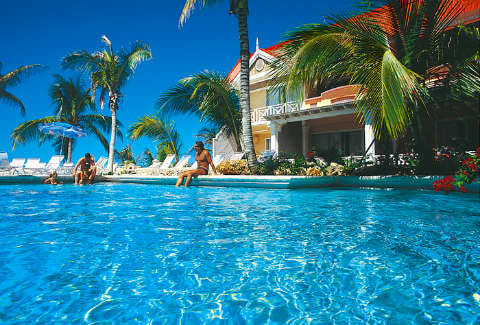 Caribbean Airlines Limited (CAL) has won the Caribbean’s Leading Airline Award for the 10th consecutive year and the Caribbean’s Leading Airline Brand Award for the third consecutive year, while Tobago’s Coco Reef Resort & Spa has won Caribbean Leading Hotel Award for the 15th consecutive year. The winners of the World Travel Awards 2019 (Caribbean and North America) were announced during a Gala Event at Sandals Resort, Montego Bay, Jamaica on Monday evening. In congratulating T&T’s winners, Tourism Minister Randall Mitchell, said that the country’s tourism product will only gain from these achievements. “All stakeholders, including citizens, must continue to further enhance and market our unique tourism product,” Minister Mitchell said. He is encouraging all tourism operators to continue to reinvest in their respective plants and operations to ensure there is a quality tourism offering. Nominations were submitted from several countries in the region, with St Lucia winning the Caribbean’s Leading Honeymoon Destination Award 2019; Jamaica winning the Caribbean’s Leading Destination 2019; Turks & Caicos being awarded the top prize for the Caribbean’s Leading Beach Destination 2019 and Sandals Resorts International winning the Caribbean Leading Hotel Brand 2019. National awards were also presented at the WTA Gala event: · Tobago’s Leading Car Rental Company 2019 – Avis · Tobago’s Leading Hotel 2019 – Blue Haven Hotel · Tobago’s Leading Resort 2019 – Coco Reef Resort & Spa · Trinidad’s Leading Car Rental Company 2019 – Avis · Trinidad’s Leading Hotel 2019 – Hilton Trinidad & Conference Centre · Trinidad’s Leading Hotel Suite 2019 – Presidential Suite, Hilton Trinidad & Conference Centre. The winners were determined via online voting from December 11, 2018 to January 10, 2019. World Travel Awards, the organization which hosts the event was established to support, promote and develop the global travel and tourism industry by identifying and rewarding excellence and inspiring its practitioners to continually raise the standards of their product and service offering. 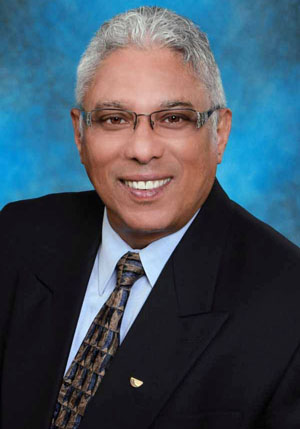 Summertime in Toronto is host to some of the biggest cultural festivals in the city celebrating Canadian diversity and the many people that make up our nation. This year, the Toronto Caribbean Carnival will celebrate the 52nd anniversary of the festival, and on this year’s frontline, they welcome newly appointed General Manager Richard de Lima. Richard de Lima was officially appointed as General Manager of the Toronto Caribbean Carnival at the beginning of last month and will be responsible for the overall management of the Festival Management Committee (FMC) and the production of the Toronto Caribbean Carnival, Canada’s celebration of freedom and diversity. The new GM brings 30 years of experience in business management, tourism, and hospitality to the 52nd year of the Caribbean Carnival celebrations in Toronto. In addition to a 30-year career in engineering and business management, including experience working for major tourism, hospitality and entertainment organizations in Canada, the Caribbean and other international locations, de Lima brings a passion for Carnival arts and culture, with his 43 years as a “mas maker”, masquerader and steelpan aficionado. “We are grateful to be working with an executive that combines both the required operational skills along with a deep knowledge of and passion for Caribbean Carnival operations”, says Joe Halstead, FMC Chairman. “We look forward to our 52nd year of the celebration under his guidance and leadership.” The Toronto Caribbean Carnival is an exciting four-week cultural explosion of Caribbean music, cuisine, and revelry. It is the largest cultural event in Canada and the largest outdoor festival in North America. Taking place from July 7th to August 11th, 2019, and since this year marks the 52nd anniversary of the carnival in Toronto it will feature more floats, music, celebrities, and fun than ever before. The theme “Canada’s Celebration of Freedom and Diversity” will infuse every aspect of the festival, from the parade route to the shows and all performers including singers, pannists and calypsonians. The city of Toronto and the Greater Toronto Area will come alive with the pulsating rhythms and melodies of Calypso, Soca, Salsa, Zouk, Reggae, Chutney, Steel Pan and Brass Bands. Carnival events will showcase originality, culture, and history to millions of spectators attending in downtown Toronto or watching on television and online. “I look forward to working with our key stakeholders in the Mas, Pan, and Calypso communities to forge truly collaborative relationships, where my objective is to evolve the Toronto Caribbean Carnival to be the best carnival in the world,” says de Lima. “As Canada’s celebration of freedom and diversity, our objective is to engage and invite Canadians and visitors from coast to coast to participate and experience the “Festival of Joy” that happens every summer in Canada’s downtown.” The Festival Management Committee (FMC) is the official producer of the Toronto Caribbean Carnival, Canada’s four-week-long celebration of freedom and diversity. Established in 1967 as part of Canada’s Centennial celebrations, the event formerly known as “Caribana”, has evolved into North America’s largest event of its kind with over 1 million participants annually and showcases the very best of Canadian Caribbean arts and culture. For more information, please visit www.torontocarnival.ca or connect with them on social media @gotocarnival. Put it in your calendars and make sure to head down to the Lakeshore and join your fellow masqueraders to celebrate the 52nd anniversary of the festival this summer! Source: Toronto Caribbean.com Tobago continues to make its name as a top ecotourism destination across the Caribbean, offering much more than white-sand beaches, eats and drinks and thriving nightlife. The smaller of the islands of the twin-island state of Trinidad and Tobago was named as the top Caribbean destination in a reader-submitted list of travel tips in the UK’s Guardian - owing to its amazing bioluminescence tours. The tours, which involve stand up paddling (standing on a surf-style board and propelling with a long paddle) and kayaking are run by brothers Duane and Brett Kenny of Stand Up Paddle Tobago. The winning tip was sent in by Julia Burdge: “My friend and I went on the bioluminescent tour in Tobago run by Stand Up Paddle Tobago, leaving Pigeon Point after sundown. We paddled our kayak in the dark to the lagoon where the luminescent plankton thrive. It was the most amazing thing I’ve ever seen. When you disturb the plankton it glows like watery fireflies. Part of the tour is to swim in the (warm) lagoon and watch the streams of light in your wake… it was stunning. It cost $60 but was worth it.” Bioluminescence is the production and emission of light by a living organism produced by energy released from chemical reactions occurring inside (or ejected by) the organism. The delightfully breathtaking phenomenon is caused by dinoflagellates, a type of marine plankton which emits a bright blueish glow when agitated. The light produced by these microscopic organisms is a defence mechanism meant to ward off predators. The two hour long tour from Stand Up Paddle Tobago is available year-round at a cost of $60 USD and welcomes all ages. The darker the better as this enhances the experience, but be sure to take a high-end camera with waterproof housing to capture the best shots of the bioluminescence. Jamaica’s seafood and jerk chicken, Barbados’ fish fry, Dominica’s rainforest tour, Belize’s coral island Caye Caulker, Havana’s food tour and Puerto Rico’s hot springs also made the list. Source: The Loop TT, January 2019 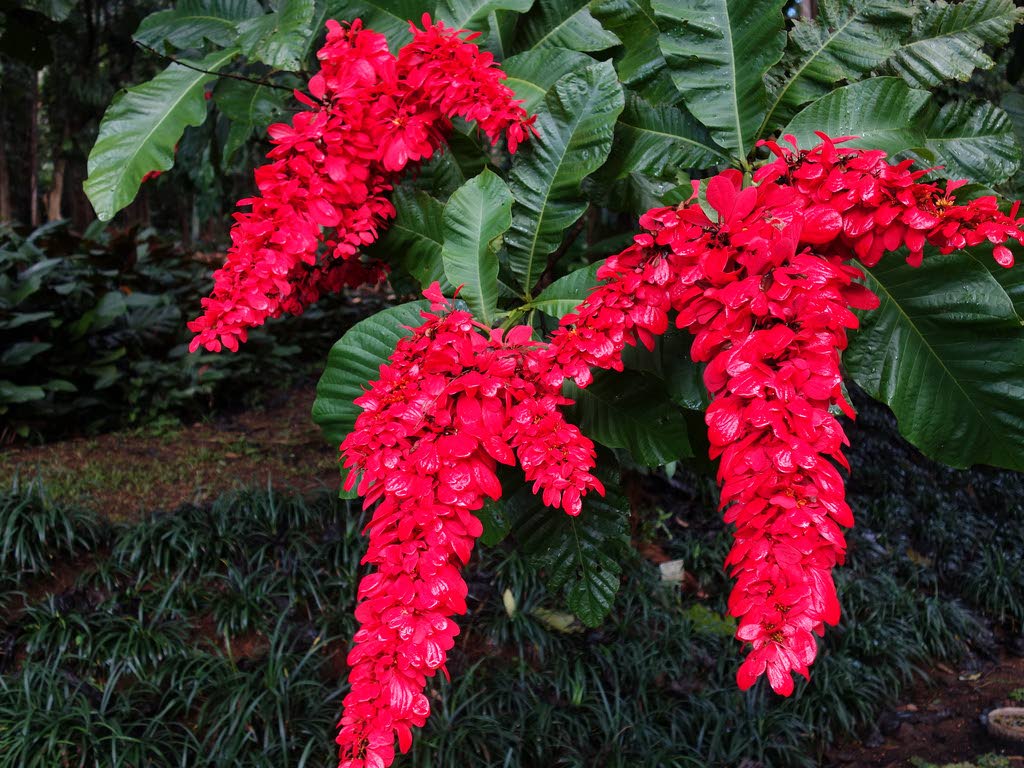 Prof Emeritus E Julian Duncan In 1844, the Polish botanist Jozef Warszewicz was sent to Guatemala to join a Belgian company established there. He became an independent collector and supplier of plants to gardens in Europe. He travelled extensively in Guatemala, Panama and Costa Rica, where he discovered a wealth of new plant species. Among these was Warszewiczia coccinea (Vahl) Kl, a member of the Rubiaceae (the family to which plants such as Coffea arabica (coffee) and Mussaenda (ornamentals) belong). The plant is a native of the New World and is found in a vertical band straddling the equator, from Costa Rica in the north to equatorial Peru and Brazil in the south. This strip includes Trinidad. In their 1928 publication of Part I Flora of Trinidad and Tobago, Williams and Cheesman, treated the Rubiaceae and recorded the presence of the plant in Trinidad. In addition to a botanical description of the plant, they recorded the names by which it is known locally. These are Trinidad Pride, wild poinsettia and Chaconier. They described the plant as being "a gorgeous plant, forming one of the The plant produces a long bloom that is a panicle, a long arching axis, along which are paired cymes–groups of flowers with a common stalk (peduncle). Each cyme consists of 15-20 flowers. The flowers all have five green sepals, five yellow petals which are fused at the base to form a short tube topped by five free lobes, five anthers and centrally, the pistil. In one of the flowers, of each cyme, one of the sepals is transformed into a red, long-stalked petal-like structure, which gives the bloom its attractiveness. Since the cymes are paired along the axis, there are twice as many of these transformed sepals as there are pairs of cymes along the axis. It is often reported that "it is the national flower of Trinidad and Tobago because it blooms on August 31, which coincides with the day that Trinidad and Tobago became independent from the United Kingdom." This statement can be easily misunderstood. In reality it blooms from February to November, peaking in July. Independence Day thus falls during the period in which it is in full bloom. most attractive features of the flora of Trinidad." (Williams and Cheesman, 1928). There are two legends associated with the more commonly used of the local names, one of which states: "The title is in honour of the last Spanish Governor of Trinidad and Tobago Don Jose Maria Chacon." This appears to be based on the mispronounced Chaconia, and hence misspelled, local name originally given. The second is based on the recorded name–Chaconier, (Williams and Cheesman, 1928), the name given by the early French settlers. Many of the local names given by them, end in "ier", such as balisier (now pronounced differently) to the Heliconia, and Cocotier (now called cocoyea), to the coconut among others. It is recorded that the red, transformed sepals reminded them of the ribbons of silk or cotton attached to the garments of dancers of the chacone (sometimes rendered chaconne or chacona), a peasant dance popular in Spain and France in the 18th century. In Spain these decorations were called chaconadas. In 1957, Grace Mulloon (nee Atteck) travelling along the Arima/Blanchisseuse road, in the company of David Auyong, spotted a rather spectacular bloom at the top of a group of Chaconiers. Realising the importance of their find, Auyong parked the car and at risk to both limb and life, clambered down the steep slope to obtain cuttings which he hoped to use as propagating material. His attempts were unsuccessful; he therefore solicited the help of Roy Nichols, who worked at the Imperial College of Tropical Agriculture (ICTA). When success was achieved, they returned to the site from which the material had been collected, only to discover that the plant had been cut down in a road widening exercise (Nichols 1963). A plant was sent to Kew gardens in England where it was confirmed to be a mutant of W coccinea. Had Auyong not persisted in his attempts to propagate their find, we would never have known the plant. It is recognised to be a mutant of W coccinea and has been given the cultivar name, David Auyong. The main difference between the wild type and the mutant is that in the former, one sepal of one flower in the group of 20 is transformed, whereas in the latter all the sepals of all the flowers of any cyme are enlarged to some extent and red; in many, the transformation is as extreme as that in the wild type sepal. The wild type is commonly referred to as the single and the mutant as the double Chaconier. These terms are unfortunate and have led to an incorrect statement recorded in Margaret Barwick’s Tropical and Subtropical Trees: An Encyclopedia. Referring to Warszewiczia coccinea she states, "The double flowered form lacks a functional pistil and does not produce fruit." (Barwick, 2004). This statement is no doubt brought about by the use of the term double to describe the flower, for in strict botanical terms, a double flower is one in which there is an increase in the number of petals or petal-like structures in place of stamens and/or carpels. Such flowers are thus sterile. The increase in the number of petal-like structures in W coccinea cv David Auyong is brought about by the transformation of sepals. The stamens are present and functional, as is the pistil. There is no record of the mutant origination elsewhere. Although plants can now be found growing in other countries, these are all clones of the plant spotted by Mulloon. The inflorescence of the mutant form, which was recently named the national flower, replacing that of the wild type, is truly Trinidad pride. References * Barwick, Margaret (2004) Tropical & Subtropical Trees: An encyclopedia. Timber Press, Oregon 484pp. * Nichols, Roy (1963) ‘A new Cultivar of Warszewiczia coccinea’ Journal of the Royal Horticultural Society Vol. 88 (9), 406-408. * Williams, R O and Cheesman, E D (1928) Flora of Trinidad and Tobago–Rubiales. Vol 2 Part 1. Department of Agriculture. The Government Printery, Port of Spain 1-48 This beautiful song celebrating the 50th anniversary of Barbados in 2016. A couple of years old but still very nice. From left, Sarah Louis , judicial delegate for the 42nd Assembly District, Councilman Jumaane Williams, Mathylde Frontas, Assemblywoman Rodneyse Bichotte, Mathylde’s sister. In an unusually very high voter-turnout in midterm elections in the United States that observers say illustrates strong opposition to President Donald J. Trump, several Caribbean Democratic candidates in New York romped to victory Tuesday night with overwhelming majorities.
Uninterrupted rain throughout Tuesday and problems with the voting machines did not prevent voters from casting ballots in an era of Trumpism. According to New York State Board of Elections results, popular Caribbean American Congresswoman Yvette D. Clarke, the daughter of Jamaican immigrants, won in a landslide, garnering 167,199 votes, or 87.59 percent, to her Republican Haitian-born challenger, Lutch Gayot, who received 10,336 votes, or 10.13 percent. Clarke, who represents the 9th Congressional District in Brooklyn, noted that her victory came on the 50th anniversary of the first Caribbean American woman, Shirley Chisholm, to run for the United States Congress. The late Chisholm, whose mother was Barbadian and father Guyanese, was also the first Black woman to run for the US Congress. She had represented the then 11th Congressional District in Brooklyn. “I’ve demonstrated to the people of this district (9th Congressional) that I am committed to them,” Clarke told Caribbean Life Tuesday night. “But I still have more work to do in the era of Trump — that this district has opportunities to sustain itself, that we use voter-strength to push for the goals of my community,” she added. With the Democratic Party regaining the US House of Representatives, Clarke, a senior member of the House Energy Committee, said she will be in a better position to help her constituents. “The victory will help to invest in infrastructure, health care, among a host of other things,” she said. In the New York State Senate, Democratic Senator Roxanne Persaud, a Guyanese-born immigrant, regained her seat in a landslide in the 19th Senatorial District in Brooklyn. Persaud received 64,940 votes, or 86,90 percent, to her Republican challenger, Jeffrey Ferretti, who received 7, 419 votes, or 9.93 percent. “By winning the seat, we can continue doing what we’re doing,” Persaud told Caribbean Life Tuesday night at the Democratic Party Club headquarters in the Canarsie, Brooklyn. “I’m not focusing on one group of people. When you do that, you’re polarizing people. “I do a lot of social issues in my community — foster care, senior care, etc.,” Persaud added. For just the third time in 50 years, the Democratic Party gained control of the New York State Senate Tuesday night in what pundits said was a clear repudiation of Trump’s policies. In the 20th Senatorial District in Brooklyn, Zellnor Myrie, a young lawyer of Costa Rican parentage and Jamaican-born grandmother, defeated the incumbent Jesse Hamilton, who ran for the Independent Party. Democrat Myrie had trounced Hamilton in the Democratic Primary. In Tuesday’s midterm, elections, Myrie received 67, 803 votes, or 88.06 percent, to Hamilton’s 5, 327 votes, or 6.92 percent. In New York State Assembly, Caribbean Democratic candidates were also triumphant. Assemblywoman Rodneyse Bichotte, the daughter of Haitian immigrants, who represents the 42nd Assembly District in Brooklyn, handsomely beat two challengers. Bichotte garnered 26, 817 votes, or 87.66 percent; Republican Matthew Williams received 2,173 votes, or 7.10 percent; and Jamaican Anthony Beckford, of the Green Party, received 631 votes, or 2.00 percent. “I feel good!” Bichotte exclaimed on Election Night. “I think, throughout the whole year, I’ve been working hard to fill all corners of my constituency.” Bichotte’s Assembly Democratic colleague, Diana Richardson, the daughter of St. Martin and Aruban immigrants, was unchallenged in the 43rd Assembly District in Brooklyn. Richardson received 33,345 votes, or 92.94 percent. In her first bid for elective office, Haitian Dr. Mathylde Frontas, a Columbia University professor, was victorious in the 46th Assembly District in Brooklyn. In a four-way race, Democrat Frontas received 14, 750 votes, or 51.84 percent; Republican Steven Saperstein received 11, 823 votes, or 41.55 percent; Ethan Lustig-Elgrably, of the Working Families Party, received 421 votes, or 1.48 percent; and Patrick Dwyer, of the Green Party, received 284 votes, or 1.00 percent. Trinidadian Jaime Williams was overwhelmingly re-elected in the 59th Assembly District in Brooklyn. Democrat Williams received 26, 229 votes, or 77.69 percent, to Republican Brandon Washington’s 6,306 votes, or 18.67 percent. Source: Caribbean Life, Nov. 2018
Bernadette's father was born in Trinidad, and her mother is French Canadian.
Clement is the first woman to be elected mayor of Cornwall as well as being the first visible minority to hold the office, and she said she is “very proud of that.” It’s a significant milestone for the community and it’s one that she hopes will inspire children in Cornwall. “(I want) children – boys and girls — everywhere to see that running for office is just something that women do,” she said. “I am also proud to be the Francophone black mayor of Cornwall. But I want to remind people that Cornwall elected its first Jewish mayor (Aaron Horovitz) decades ago, so this is nothing that necessarily unusual for Cornwall to do. “Now we’re just going to continue to build on the history of diversity that we’ve had here for the past 235 years.” Bernadette has been a city councillor for the past 12 years, and won the position with nearly 54% of the vote, handily defeating the incumbent Mayor Leslie O'Shaughnessy. We at the TTAO wish you the very best in your new position of Mayor. Congratulations. Source: Portions taken from the Standard Freeholder, Oct 2018 |
T&T news blogThe intent of this blog is to bring some news from home and other fun items. If you enjoy what you read, please leave us a comment.. Archives
June 2025
Categories
All
|


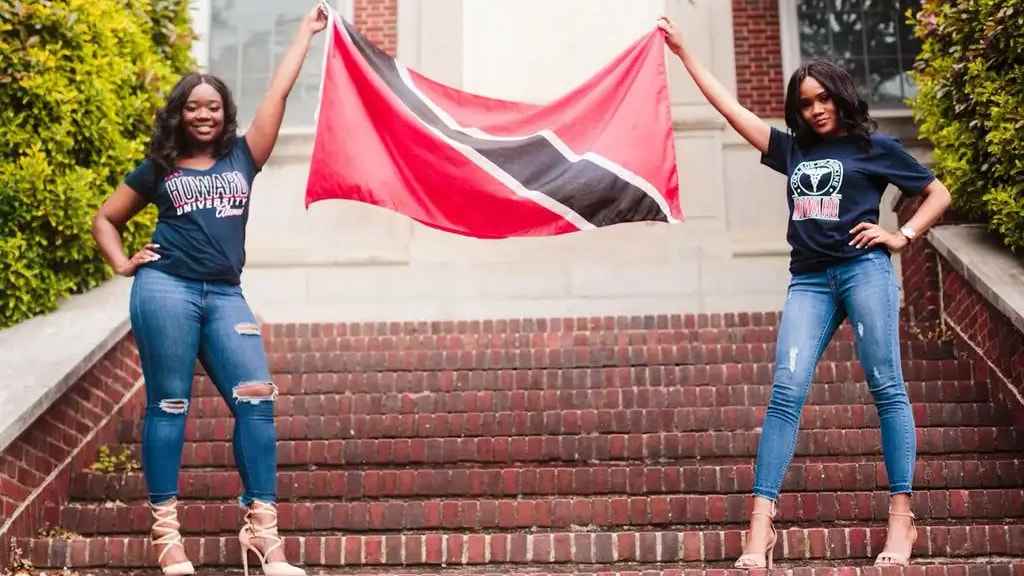

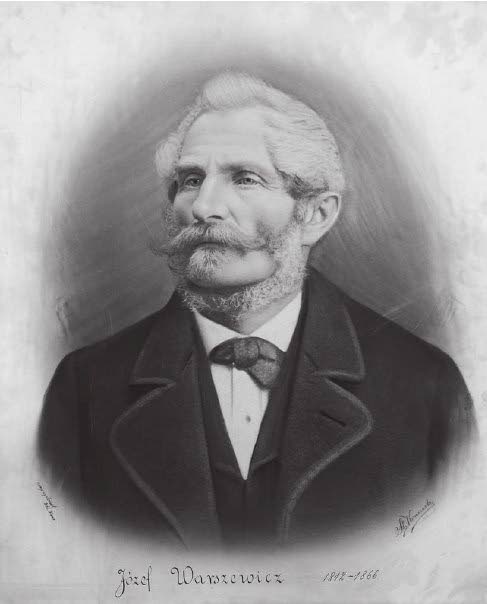
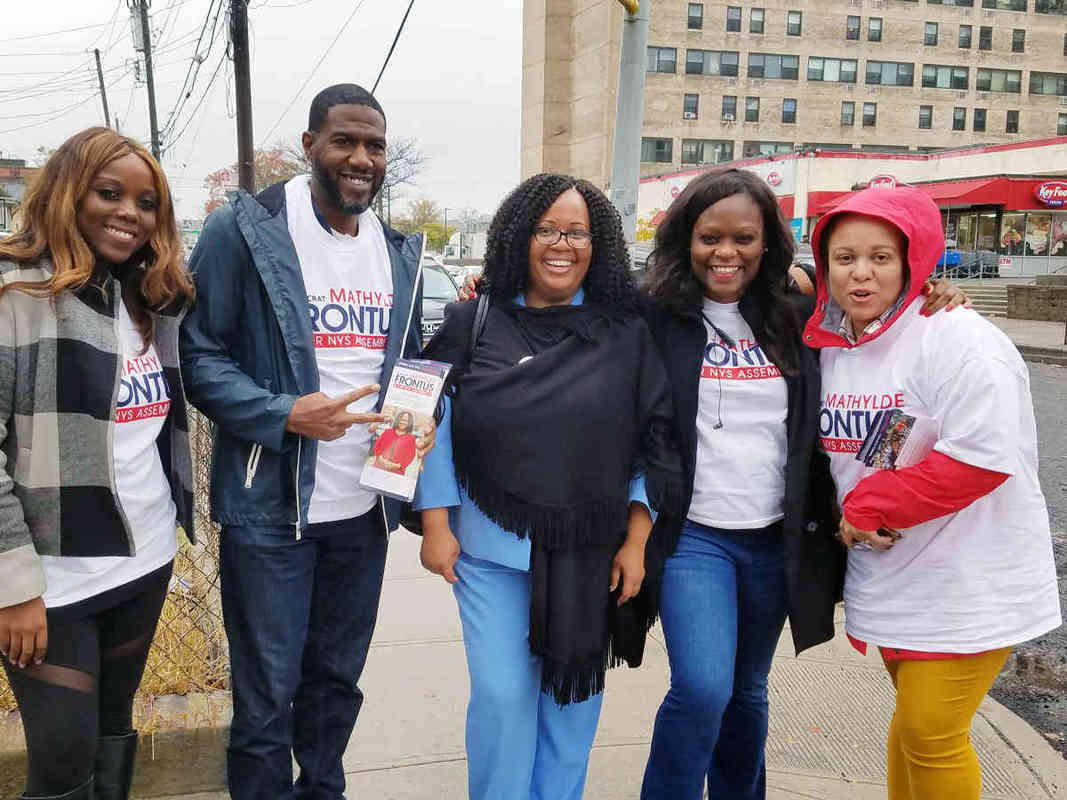
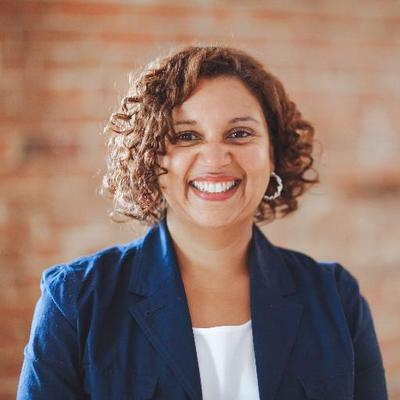

 RSS Feed
RSS Feed